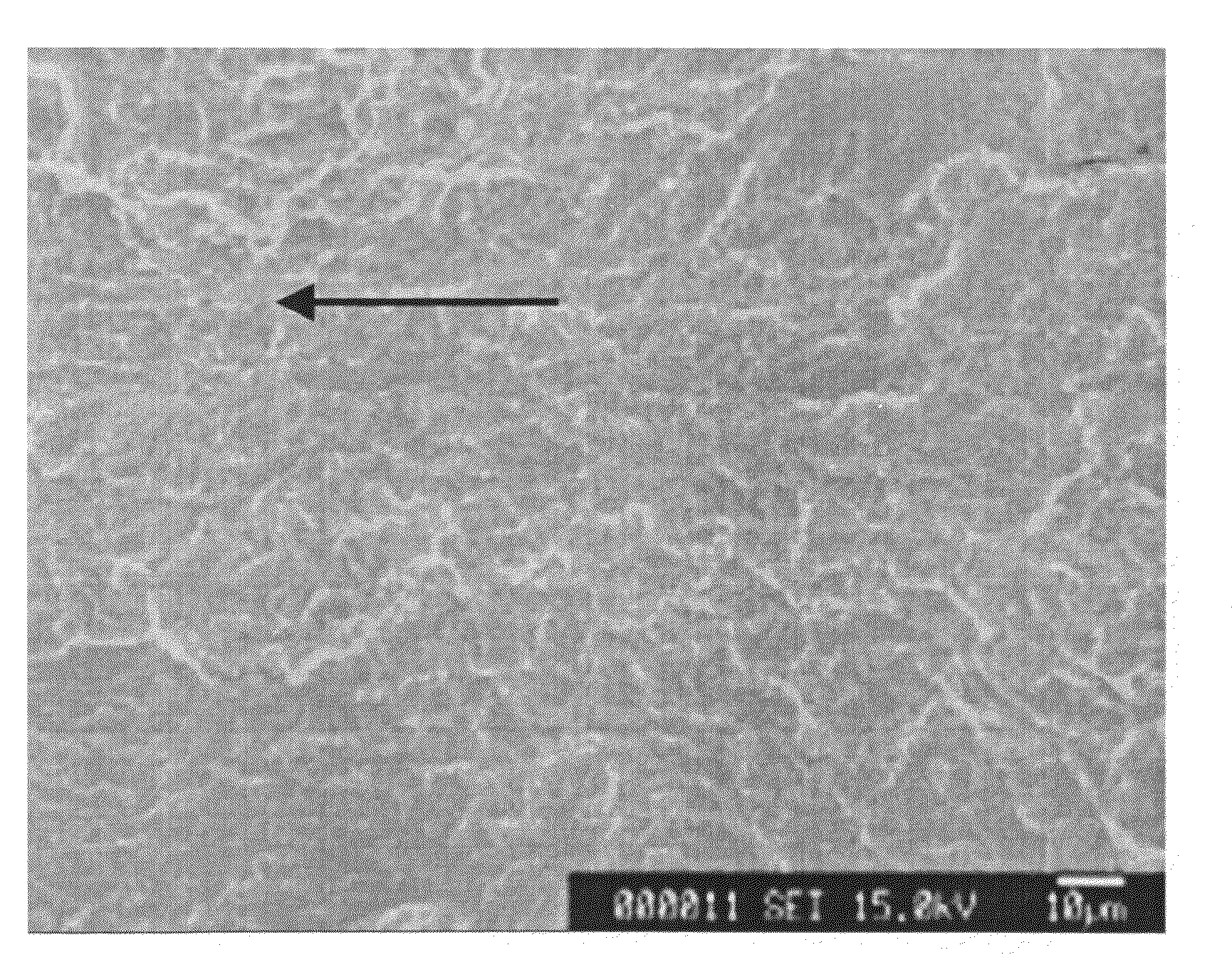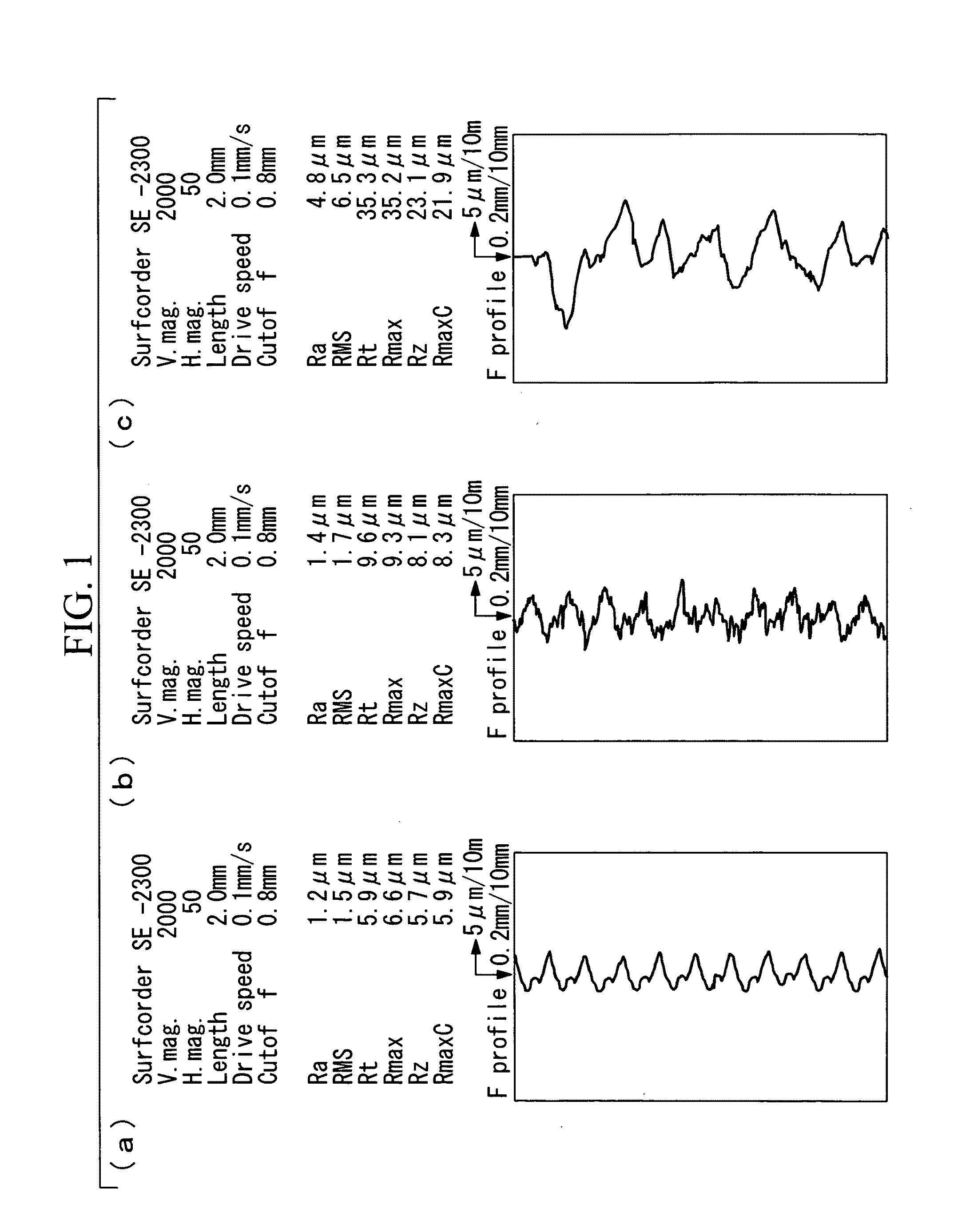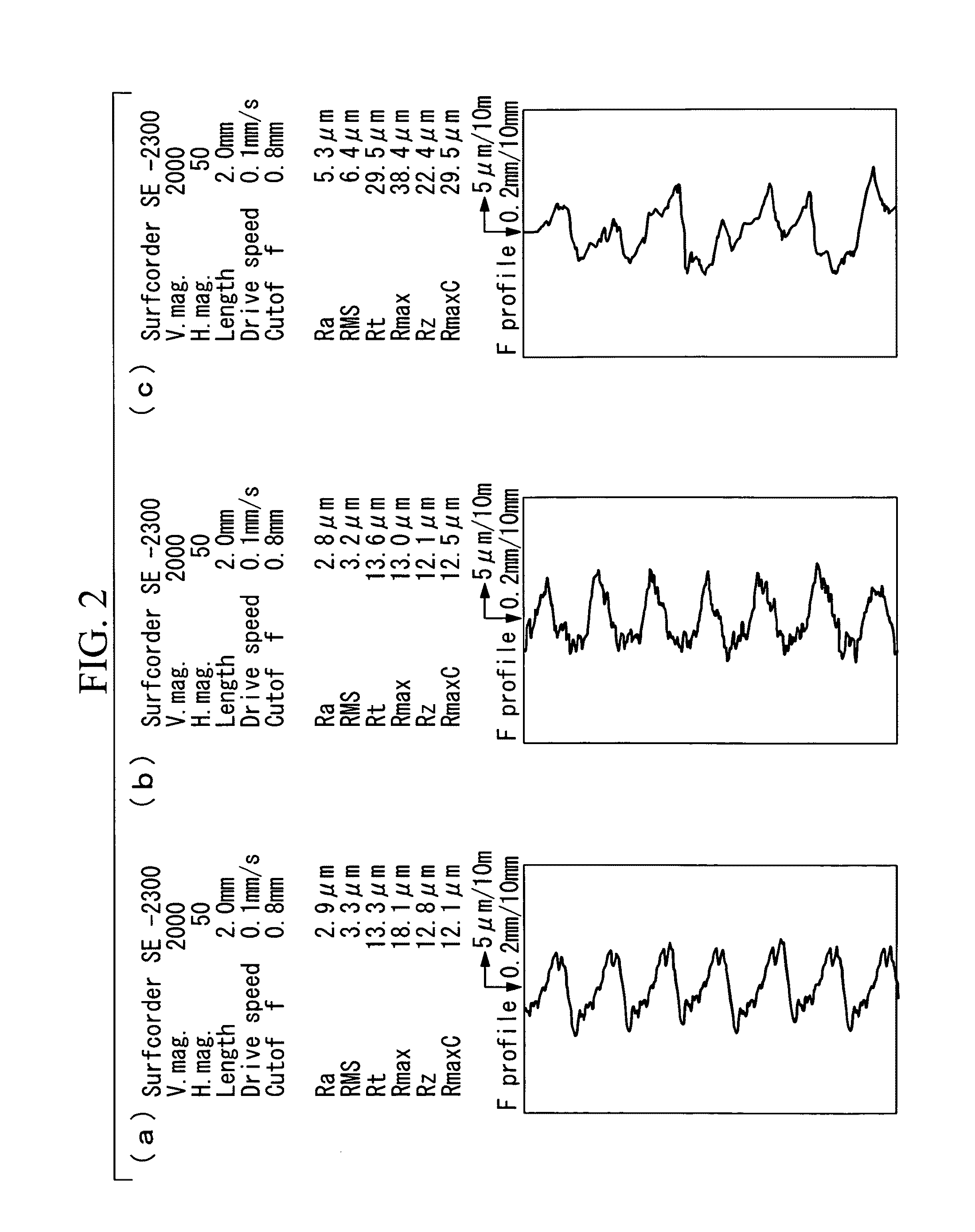Process for Producing Metallic Component and Structural Member
a technology of structural components and components, applied in the direction of manufacturing tools, coatings, transportation and packaging, etc., can solve the problems of increasing the surface roughness of the member, unavoidable partial reduction in the degree of improvement in fatigue properties achieved by shot peening, and no deformation. , the effect of excellent fatigue properties
- Summary
- Abstract
- Description
- Claims
- Application Information
AI Technical Summary
Benefits of technology
Problems solved by technology
Method used
Image
Examples
example 1 and example 2
[0047]A sheet of an aluminum alloy material (7050-T7451, dimensions: 19 mm×76 mm×2.4 mm) was used as a test specimen. One surface of this specimen was shot peened using a shot material composed of alumina / silica ceramic particles with an average particle size (most frequent particle size) of not more than 50 μm, under conditions including an air pressure of 0.4 MPa and a spray time of 30 seconds.
[0048]Two aluminum alloy materials having different surface roughness values were prepared as the pre-shot peening materials. In Example 1, an aluminum alloy material with a surface roughness of 1.2 μm prior to shot peening was used, whereas in Example 2, an aluminum alloy material with a surface roughness of 2.9 μm prior to shot peening was used.
[0049]A dynamic microparticle shot apparatus (model number: P-SGF-4ATCM-401, manufactured by Fuji Manufacturing Co., Ltd.) was used as the shot peening apparatus.
[0050]Following shot peening, the surface roughness, compressive residual stress, and d...
example 3 and example 4
[0056]With the exception of replacing the test specimen with a sheet of a titanium alloy material (Ti-6Al-4V (an annealed material), dimensions: 19 mm×76 mm×2.4 mm), shot peening in Example 3 and Example 4 was performed in the same manner as in Example 1 and Example 2, respectively.
[0057]Two titanium alloy materials having different surface roughness values were prepared as the pre-shot peening materials. In Example 3, a titanium alloy material with a surface roughness of 1.64 μm prior to shot peening was used, whereas in Example 2, a titanium alloy material with a surface roughness of 3.2 μm prior to shot peening was used.
[0058]The conditions for shot peening in Example 3 and Example 4, the surface roughness values for the test specimens before and after shot peening, and the compressive residual stress, surface roughness, degree of deformation and fatigue life of the test specimens following shot peening are shown in Table 1. The fatigue life was evaluated by performing a tension-...
example 5
[0062]The area around the hole within a test specimen composed of a flat sheet of a titanium alloy (Ti-6Al-4V (an annealed material)) with a hole formed therein was shot peened in the same manner as Example 3. No processing such as chamfering or rounding of the hole edges was performed prior to shot peening. Following a fatigue test, the fatigue fracture surface was inspected using an electron microscope. FIG. 6 is an electron microscope photograph of the fatigue fracture surface of the specimen from Example 5. In the figure, the arrow indicates the fatigue fracture origin.
[0063]From the electron microscope photograph of FIG. 6 it is evident that the fatigue fracture origin is several tens of μm inside the inner surface of the hole within the specimen of Example 5.
[0064]The results of performing a fatigue test (a tension-tension fatigue test, stress ratio R=0.1) using the above hole-containing flat sheet are shown in Table 2. It is clear that despite the fact that no processing such...
PUM
| Property | Measurement | Unit |
|---|---|---|
| particle size | aaaaa | aaaaa |
| surface roughness | aaaaa | aaaaa |
| surface roughness | aaaaa | aaaaa |
Abstract
Description
Claims
Application Information
 Login to View More
Login to View More - R&D
- Intellectual Property
- Life Sciences
- Materials
- Tech Scout
- Unparalleled Data Quality
- Higher Quality Content
- 60% Fewer Hallucinations
Browse by: Latest US Patents, China's latest patents, Technical Efficacy Thesaurus, Application Domain, Technology Topic, Popular Technical Reports.
© 2025 PatSnap. All rights reserved.Legal|Privacy policy|Modern Slavery Act Transparency Statement|Sitemap|About US| Contact US: help@patsnap.com



